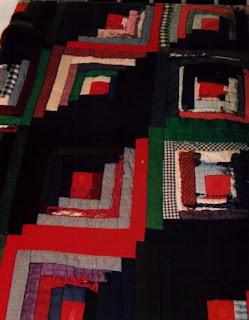Halfway is such a difficult thing to judge in genealogy. Family historians are never really satisfied that they have finished researching any particular family member. It often seems that none of mine are even half researched. However, the one branch of the family story that seems not to have moved forward much at all in the past few years is my paternal line in Nordland, Norway, the ancestors of my Bardahl family. I know there is much more waiting to be discovered about them.
 |
| Google Earth image showing location of Bardal in Nordland, Norway |
This week I will focus on my 3X great grandfather Ole Joensen. Ole is the maternal grandfather of my immigrant ancestor Hans Bardahl who was featured in another story in this series.
For my starting point on this the 7th day of June, I will list the facts I know about Ole and list the questions that remain unanswered. Perhaps more research will move things ahead by the time this story is completed during the last week of June. Or perhaps it won't. Will it still feel just halfway done?
What I know about Ole: Halfway at Most!
- He lived in the Nesna area of Nordland, Norway.
- He married Marith Arnstdatter on Sunday 5 October 1794 in Nesna.
- The 1801 Norwegian census for Wasdahl farm gives his age as 41, making his birth date about 1760.
- The same census indicates that he is in his second marriage while wife Marith Arnsdtr is in her first.
- Ole and Marith have 4 children living with them in 1801, one son Anders Johan age 10 from his first marriage and three children of theirs: Arnt age 6, Kirstina Dorothea age 4 and Maren age 2.
- Ole's son from his first marriage was baptised on 22 April 1791.
- Son Arnt was baptised 20 September 1795 in Nesna.
- Daughter Kirstina Dorothea was baptised 04 May 1797 in Nesna.
- Ole and Marith had a daughter Olina Maria Olsdatter born in 1806, baptised at Nesna on 8 June 1806 (Olina Maria is my 2X great grandmother, the mother of Hans Bardahl)
 |
| Google Earth Map showing locations of Nesna and Hemnes in relation to Bardal |
Questions that remain unanswered:
- When and where was Ole born? When was he baptized?
- Who were Ole's parents? (We know his father's first name would be Joen since Ole's last name is Joensen.)
- Did Ole have any siblings?
- Was Ole confirmed and, if so, when?
- Who was his first wife? When did they marry? When did she die?
- The census record has Ole's occupation given as "Boxelbonde", presumably a type of farmer. What does this term specifically mean?
- When/where/how did Ole die? What about Marith?
- What else can be learned about their lives in their community?
Moving Beyond Halfway?
There is one possible birth record found on Familysearch.org for an Ole Joensen baptised in Nesna on 03 November 1760; his father's name was Joen Nielsen. Frustratingly, baptism records at the time seemed to list the baby's father and the witnesses, but no mention is made of the mother! When I located this birth record in the Nesna kirkebøker (church records), the farm name for Joen Nielsen appears to be "Horn" and a farm of that name does still exist in Nordland. The witnesses names are somewhat difficult to decipher and appear to be something like these: Aug Buformann, Anders Guillesen, Jacob Llo?, Karen Pedersdtr Hurn and Vendel Danuls. None of these names sound familiar or give me any comfort that I am finding the right family.
 |
| Is this the baptism record for "our" Ole on 3 November 1760? |
An Ole Joensen from Levang was confirmed at Nesna in 1776. If this is the same Ole, he would have been 16, the usual age for that time for being confirmed in the Lutheran Church. But the Levang farm name has not cropped up before and this is probably not the right Ole.
The marriage of Ole Joensen Jedgruben to Dordie Nielsdtr Fugermoe occurred at Hemnes on 16 August 1789. This might be the right Ole in his first marriage, but again the farm name is unfamiliar. Attempts to find a death record for Dordie prior to Ole's marriage to Marith have not succeeded.
The baptism of Ole's son Anders Johan was recorded for 1791 in the Hemnes, Nordland church book. This is most certainly the correct Ole. It appears that I should be focusing on nearby Hemnes rather than Nesna for Ole's early life. Lots more work to do!
 |
| Hemnes baptism record for Anders Johan Olsen 22 April 1791 |
The Wikipedia article for Bardalssjøen indicates that the village of Bardal is located along the south coast of the Ranfjorden and is about 10 kilometres west of Hemnesberget. It surrounds the Bardalselva river which flows into the fjord (as can be seen on the map below). It goes on to say that the Bardal area has historically been part of both Nesna and Hemnes. Both parishes must therefore form part of any further research.
Unsatisfying as it is, halfway done is how Ole's story remains at the halfway point of 2015.
Sources:
- Norwegian census record (folketellinger) for 1801 and church book records (kirkebøker) for Nesna and Hemnes, Nordland, Norway available online at Digitalarkiveret
- Family History Center microfilms 125211 and 125212



















